- Home
- Tom Germann
Outbreak: A Zombie Transference Short Story Prequel
Outbreak: A Zombie Transference Short Story Prequel Read online
ZOMBIE TRANSFERENCE: A PREQUEL SHORT
Outbreak
Written and Published by Tom Germann
Copyright 2016
Licence Notes
Thank you for reading this short story. A great deal of effort went into the creation of this. So if you would like to share this with a friend please do so by letting them know where they can get this. This work is not to be reproduced, copied or distributed for commercial or non-commercial purposes.
If you enjoyed this book please visit www.tgermann-sf-guy.com to discover other works by this author.
If you would like to stay informed of coming announcements click http://eepurl.com/bYnxvD
Thank you for your support.
This book is a work of fiction. Names, characters, places and incidents are the product of the author’s twisted imagination or are used fictitiously. Any resemblance to actual events, locales or persons, living or dead, is entirely coincidental. It would also be very worrying.
Edited by: Robin Schroffel
Cover by: www.10dollarcovers.com
ZOMBIE TRANSFERENCE THE SERIES
Outbreak (Prequel short)
The Service Centre
The City
The Train
The Redoubt
OTHER SERIES
The Corporate Marine Series:
Book 1 Video Game Recruiting
Book 2 Welcome To The Marines
Book 3 First Deployment
Book 4 Coming Spring 2017
Stories From The CM Universe:
Virtual Reality Start 2017
Virtual Reality Nightmare 2017
TABLE OF CONTENTS
INTRODUCTION
DECEMBER
IRON GUARD BASE ‘RIGHTEOUS HAMMER’
NEW YORK, A FEW DAYS LATER
IRON GUARD BASE ‘RIGHTEOUS HAMMER’, ONE MONTH LATER
OUTSIDE FREETDORF
NOW
END
AUTHOR’S NOTES
A thank you as always to those who have provided assistance and a sympathetic ear when I start talking about this series. You help make this story a success by asking those questions on how infection is spread and why most of the people living there are so slow to do what should seem obvious to us.
If you enjoyed the book in any format reviews are always helpful for an author to get feedback on how they are doing. This story can be found on good reads if you wish to leave a rating or review through the link below.
https://www.goodreads.com/book/show/33006345-outbreak
INTRODUCTION
Every story starts somewhere.
Zombies don’t just come up out of the ground and walk. Something has to trigger the event.
Set a few months before Zombie Transference: The Service Centre, this story gives you some of the backstory on the actual cause of the zombie outbreak.
Who created this flu, or did it evolve naturally? Why wasn’t information on this outbreak made public so that the people could prepare? Why didn’t the government take steps to halt the spread of the infection and properly deal with the side effects? How did it spread so quickly, and are there long-term plans to control it?
DECEMBER
Outside, the winter winds howled. Yet the winter had been unseasonably warm, and while there would normally be two feet of snow on the ground, there was just a dusting of snow everywhere, with some ice. In communist-controlled Europe, the temperatures were a welcome relief from the cold and times of shortage of just about everything. Central planning was always catching up and, all glory to the Politburo and the planning committee (at least while anyone is nearby), maybe eventually they would pull their head out of whatever dark hole they’d stuck it in and actually get people what they needed. Of course, members of the party were better cared for and the war had been going on for generations now.
The capitalists of the West were always ready to strike and throw the people down so that they could have their bourgeois excesses. The communists maintained a huge army and military forces to hold down the endless miles of coastline while keeping a liberation force ready for when the West finally collapsed. The large fleets of transports ate up resources; it couldn’t be avoided.
Then, of course, there were the religious fanatics and other secessionist movements that needed military might in garrisons to be held down. All in all, it was amazing that the Politburo and the communist party had been able to hold on as well as they had.
The entire structure of the military arm, and the people themselves, could almost be heard to be creaking. They were stretched to the limit and barely holding on, exhausted and assaulted from all sides. But the people would not be stopped by exhaustion. When attacked from one side, they destroyed that threat and dealt with whatever else came on. They would persevere no matter what, no matter how long it took.
The leaders of the People’s Party were even now preparing to deal with the next problem that had come up.
If it was not dealt with promptly, the people could start to lose faith.
That would not be good. Therefore, any matter that came up as a threat would be severely dealt with as both an example and a reassurance to the people.
Nothing encouraged the people more than seeing a few hundred executions. Even if those executed were perhaps not quite as guilty of those crimes as the people’s tribunes found them to be.
Guilt was guilt. It could be used to cement the union together and keep things as they should be.
IRON GUARD BASE ‘RIGHTEOUS HAMMER’
Deep in one of the sealed bunkers maintained from the old days, several older generals sat around a conference table looking at a much younger man in the uniform of a colonel. The large red stars under his rank showed that he was a high-ranking member of the infamous Iron Guard. All the members of the committee knew that the man had a keen mind and would not bend from the truth. They knew that he would not give answers designed to get himself promoted.
The figure at the head of the table was a small, wizened man wearing a crumpled uniform and an aura of power. The cigar in his hand was not available to everyone; it was a gift from the ruler of Cuba, who was a fan. The cloud of smoke around him was thick and cloying. Yet shining through that cloud were the small man’s eyes. He took in everything around him.
There were several armed guards around the perimeter of the room; each was also a member of the Iron Guard. The base that this bunker sat in was all Iron Guard, with top-of-the-line communications equipment and the ability to be self-sufficient for a year.
“Comrade Colonel, thank you for taking the time to come today and brief us. I understand how busy you are, trying to unravel what is going on.” The chairman stopped and took a pull on his cigar.
The colonel was standing rigidly at attention, looking straight ahead, and answered in clipped tones. “Comrade Chairman, I make time to brief the committee and have at least a partial analysis with me.”
The chairman continued. “Please stand at ease so you can properly brief us, comrade. Begin when you are ready and we will save questions till the end.” The chairman then leaned back in his chair and waited, taking the occasional puff of his cigar.
The colonel relaxed. “Yes, Comrade Chairman,” he said, and snapped his fingers. Immediately a projector came on, shining a bright light through the thick cigar smoke that seemed to fill the room. On the far white-washed wall, an image came into focus.
The title read: ‘Operation Winter Waste’ and ‘Classified’.
The colonel began his briefing. “As the information handed out earlier states, the purpose of Operation Winter Waste was to develop a biological weapon th
at could be released in an enemy territory before invasion. The concept of a flu-like cold coming on at the beginning of winter would not be surprising. As more and more personnel were infected with this airborne virus there would be a drain on resources. As casualties mounted, it was initially believed that approximately 30 percent of those infected would die within days to weeks. The project manager believed that they could increase the virulence of the agent and had a secondary group working on increasing lethality. They had some success and were working on even more. Unfortunately, there was a fire at the site, which burned out many offices. The material that was pulled out by special teams is very piecemeal. We have no clue what was done or how. This project was in process for several years, and all that work would need to be painstakingly recreated.”
The colonel stepped back and nodded and the image changed to a view of the burned-out site. In the background in every picture that came up were heavily armed soldiers in chemical warfare gear.
He continued. “We initially thought that there had been sabotage, but the team had engineers with them that are experienced. At this time they believe that the vent systems broke down from lack of maintenance or parts. There was an accidental spill and the leakage was extreme. The facility manager must have hesitated because initial lockdown did not happen and it appears that the main doors were opened, releasing the agent into the local area. Most, if not all, of the facility personnel were infected at the initial outbreak. The guards on the wall and the posts made an effort to stop everyone from leaving, but some appeared to have run.”
He continued. “The scientists working on this had made several breakthroughs that increased the danger of the agent. There is no indication whether they knew what they had created or not. But there are side effects to the agent.”
The slideshow stopped and a numbered countdown started. A black-and-white movie started playing. The scene was soldiers advancing toward a series of buildings surrounded by a high chain-link fence. They were advancing toward a large gate and a guard post could be seen to the side. That guard post was concrete, with a heavy machine gun mounted above it to give a sweeping field of fire that could cover 360 degrees around the bunker. The gun was unmanned. The barrier that was lowered to stop vehicles had been broken off and the splintered ends pointed up toward the sky.
The camera jumped around as whoever was carrying it was clearly not a professional and the image sometimes went in and out of focus. But the images were clear enough.
The soldiers were advancing almost in ranks on the wide road as there were signs at the side that warned of mines.
It was obvious that the soldiers were crack troops as there was no hesitation in their movements. Those on the outside of the group had their weapons up and were clearly tracking on any movements. The entire group moved as a well-oiled, if jerky, machine.
There was no sound with the film. But it was obvious that some loud noise was heard or something had happened that was not on the screen as the entire group suddenly stopped and those on the outside threw themselves down while those behind them brought their weapons up.
Out of the buildings within the compound appeared several different people. Their movements were jerky and slow. The camera seemed to focus on them and even zoomed in so that those watching could see that the camera was stationary. The movements were all wrong, and while the film quality was not excellent, it looked like some of the people were missing arms. There were two figures on the ground and they appeared to be crawling. It was hard to tell, but one of them seemed to have no legs.
The shuffling caricatures of people suddenly became excited and were moving faster. The camera was still zoomed in when they started jerking backwards.
The film zoomed back and the reason for the strange movements became obvious. The prone and standing soldiers were firing into the people coming at them.
It was as if the soldiers were on a range, taking slow, unhurried shots. What was bizarre was that while the people being shot were jerking around, only a few dropped unmoving to the ground. Most kept advancing on the soldiers.
Then the shooting stopped and just a few men armed with scope-equipped rifles kept firing. Every shot dropped one of the walkers; it was obvious that the only way to stop them was to hit them in the head.
The last of the walkers dropped and the soldiers stood and continued moving forward.
There was a great deal of film. The photographer followed the soldiers into the complex and went through some of the outlying buildings, always staying close to a man in a chemical warfare suit that wore a peaked cap.
The film stopped and then started again, but this time the scene was inside a large building. As the camera moved down the halls, it was obvious that the building was devoted to scientific research.
At one point the soldiers at the front were overwhelmed by a horde of the jerky walkers and the scene was lit with the flash of weapons going off, illuminating the spray of blood and body parts.
At the end, when the last walker was put down, the man in the peaked cap walked to the front and carefully shot every injured soldier in the head. New soldiers moved up and the group carried on.
There was another cut in the film and then soldiers were going through badly damaged offices. It was almost impossible to tell, but there had either been a large fire or an explosion. The damage was extensive in those areas.
Eventually the film stopped rolling and the room lights came partially back up.
The committee members were still sitting calmly drinking and smoking, faces expressionless. They may as well have been reviewing the estimated crop yields for the year.
Another slideshow started.
The colonel continued his briefing. “After returning and carrying out a full decontamination, which also included booster shots against all known diseases, the company was held under close observation. Initially, 120 soldiers went in. Twenty-eight were killed in action. Within twelve hours, another twenty-seven were showing signs of infection, which should not have been possible. Seventeen of those succumbed to infection and were eliminated. The other ten were cleared of infection and kept under observation.”
While the colonel had been talking, the slideshow had clicked over to an image of a soldier sprawled on the ground with half his head sprayed across the wall. Then, it clicked to observation rooms where teams of doctors in chemical warfare equipment ran tests on soldiers.
The colonel stopped. “Comrade Chairman, this is very strange. Approximately 20 percent of the people who catch this virus are able to fight it off. The agent does not care about the normal flu vaccines. Those who fight it off do so on their own. The thought had been to make a vaccine from their blood and then inoculate everyone. A trial was done. Immediately, all became sick with the virus and only 20 percent survived. After they passed away, they turned and started trying to feed on others. Being bitten by one of those who as died leads to death 100 percent of the time. The team of scientists did too good a job, unfortunately.”
The colonel came to attention as the projector in the back snapped off. “That concludes my report, Comrade Chairman.”
The room was silent. Another one of the generals sitting next to the chairman cleared his throat and spoke. “Colonel, I believe that you have information on the spread of this agent? Continue.”
The colonel hesitated for a second and then started. This time, the projector did not come on. “Comrades, the spread of this agent would have initially been airborne and then occurred through the spread of bodily fluid and limited airborne. A single person coughing as they walk through a crowded shop will infect everyone there. Over days, those people will infect others. The lockdown that was supposed to prevent the outbreak failed. Several guards who were likely infected fled. The military was not able to effectively contain the initial site. It may have been possible to sterilize the site if reaction forces had been faster. But those guards that ran spread the infection. Reports are coming in from every corner of the empire and beyond now of in
fection. The borders on the maps mean nothing at times, as smugglers and shippers often move product and sometimes people across those borders. The full impact will be felt within a few weeks within the empire. It will spread across the world. Even now the first reports of a new flu are coming in from the American coasts. I am afraid it is too late to stop the spread of the agent anywhere in the world.”
The chairman leaned forward. “Colonel, we all know that the next step was to plan for the best way to save as many of the people as possible. What suggestions does your committee have to save as many as possible?”
One of the guards by the door handed the colonel a folder of papers that he had brought in. He carefully placed the folder on the table and looked at it before looking up at the committee members again. “Immediate action to order all military units to seize food and other necessary supplies and then set up defensive works at major bases and other established safe locations. To cull the local population of the young and fit and take them in. The rest of the population must continue as best they can. One option is to arm them so that they can assist with stopping the recently dead as it would be in their best interests. Then the fortified locations wait until we are able to develop either a vaccine or cure. If neither exists after a year, those remaining will start slowly clearing the region around them. The empire can be rebuilt and those young enough can begin having children to repopulate the region. If immediate action is taken, it is estimated that we can save up to eighty million people. Most of those will die later, but that may leave us as many as twenty million to recreate the empire. If command teams are informed of what has happened with the deployment of this agent by the West, they will take necessary harsh steps and we may save more.”
The colonel stopped talking and watched the chairman.
The chairman had already had this briefing earlier from the colonel and everything had been decided then. This was just a formal meeting to make the rest of the committee feel “informed.”

 The Teddy Bear Stories - Teddy Bear Discrimination
The Teddy Bear Stories - Teddy Bear Discrimination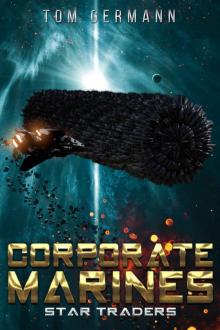 Star Traders (Corporate Marines Book 3)
Star Traders (Corporate Marines Book 3)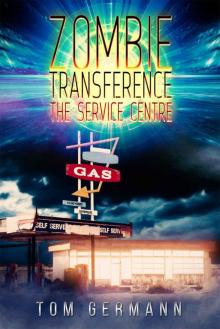 The Service Centre (Zombie Transference Book 1)
The Service Centre (Zombie Transference Book 1) Video Game Recruiting (Corporate Marines Book 1)
Video Game Recruiting (Corporate Marines Book 1)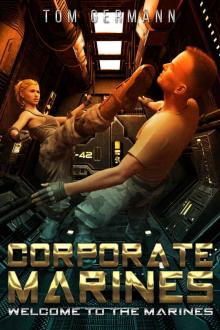 Welcome to the Marines (Corporate Marines Book 2)
Welcome to the Marines (Corporate Marines Book 2)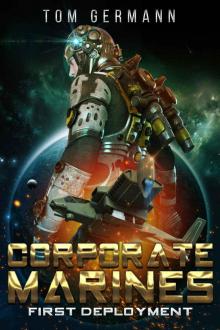 First Deployment (Corporate Marines Book 3)
First Deployment (Corporate Marines Book 3)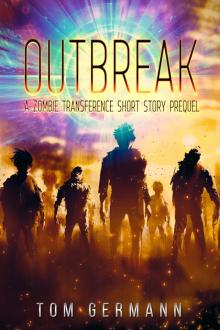 Outbreak: A Zombie Transference Short Story Prequel
Outbreak: A Zombie Transference Short Story Prequel